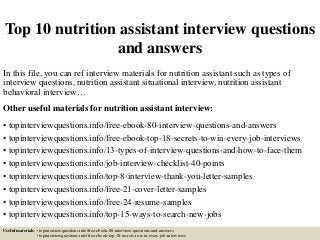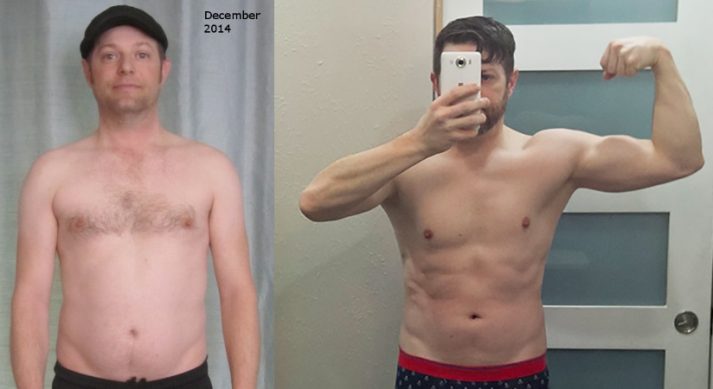
Health and Lifestyles provides a representative sample of British citizens. The aim is to find out the health status of the population, as well as their diet and exercise habits. It was completed between May 2009 and June 2009. The results have been widely reported. The data is used to determine which health-care programs are most effective. The study involved a large percentage of the population, roughly half of whom were over 40. Participating in the Health and Lifestyles study has many benefits.
It is the largest-scale study to date of British health and lifestyles. The survey's findings examine how lifestyle factors affect people's physical, psychological, and social well-being. This study uses the social and emotional contexts of the individual to determine patterns of health-related behaviour and provides important insights into what factors impact lifestyles and health. It aids in understanding the causes of most common diseases, and even how to prevent them.

Researchers in health and lifestyles face two main problems. The first is the ability to measure the impact of health behaviors on a community. Second, analytic methods are behind theoretical developments in the field. Some studies use cluster or factor analysis but fail to test the causal hypotheses. These studies are nevertheless more extensive than other studies. A more detailed understanding of the relationship between health and lifestyles can help policymakers improve policies and promote healthy living.
Research on health and lifestyles focuses on differences between groups. The study revealed that children in the "safety-problems" class had lower behavior scores, than children who were categorized in the more stablely positive class. Hypothetical child from the "safety problems" class scored at or above all outcomes. The results showed that individuals from lower socioeconomic classes and those with higher social status lead healthier lives than the rest.
Several studies have shown that the relationship between a healthy lifestyle and psychosomatic symptoms varies by gender and country. A person's symptoms will be lower if they are more healthy. In Ireland and Greece, for instance, there was a greater reduction of symptoms for boys who lived a healthy life. These findings are important for determining how to improve the quality of life of children and adolescents. It is important to have a balanced diet and exercise routine.

Complex relationship exists between psychosomatic symptoms (and healthy living) It varies from one country to the next. A healthy lifestyle scores higher, which means that symptoms will be less severe. In addition, the strongest relationship between healthy lifestyles (and psychosomatic symptoms) is seen in boys living in countries with healthier lifestyles. It varies from one country to another. This study indicates the importance of physical activity for the quality of life in the long term.
FAQ
What foods should I avoid when trying lose weight?
Avoid foods that contain trans fats. Trans fats can increase LDL (the negative) cholesterol levels and decrease HDL (the positive) cholesterol.
Trans fats can also be found in deep-fried food, fast food, packaged bakery goods, snack cakes, as well as other processed foods.
These unhealthy fats can also lead to inflammation, which can cause heart disease and diabetes.
Avoid foods containing artificial sweeteners. Artificial sweeteners have been linked to an increase in cancer risk.
They are found in everything, from soft drinks to chewing tobacco to candy bars. They appear in many other foods, including meat, poultry, fish, and eggs.
Artificial sweeteners include saccharin, cyclamate, sorbitol, aspartame, acesulfame-K, and sucralose.
The American Heart Association advises against using these chemicals, as they could damage DNA.
How many calories should you consume each day?
This can vary from person to person. On average, 2000 to 2500 calories are consumed per day. It's important to assess your life style, gender, age and height in order to determine how much calories you need.
Which workout is best for men?
The answer depends on what you are looking for. If you want to lose weight, cardio workouts are great because they burn calories faster than strength training exercises.
For those who want to gain muscle mass, strength training will be a better option, as it increases your lean body mass.
Both types of exercise have proven benefits if you want to improve your overall health.
I recommend HIIT (or sprint interval training) if you want to be fit quickly. This type is great for burning fat fast by increasing metabolism. It also boosts your endurance to continue training even when you feel tired.
What is the Best Workout for Men Over 40 Years?
The best exercise for older men is one that gives them more energy, and increases their stamina.
It is important you remember that most people aged 40 and over experience a loss in testosterone. This results in lower sex drives.
However, this doesn't mean you cannot still enjoy physical activity. Numerous studies have shown that aerobic exercise can increase testosterone levels in certain men.
You can improve your sexual performance by starting an aerobics program.
Statistics
- The PRS enabled risk stratification for overall prostate cancer and lethal disease with a four-fold difference between men in the highest and lowest quartiles (HR, 4.32; 95% confidence interval [CI], 3.16-5.89). (pubmed.ncbi.nlm.nih.gov)
- According to the American Academy of Dermatology (AAD), men over 50 are at a heightened risk of developing it. (healthline.com)
- 10 pounds in a month is likely during a lean bulking phase, especially for beginners. (muscleandstrength.com)
- According to the American Heart Association, blood pressure should be checked at least once every two years, beginning at age 20. (my.clevelandclinic.org)
- By John Thompson Take a whopping 38% off a set of PowerBlock Pros. (menshealth.com)
External Links
How To
How do I lose weight while working out?
Exercise helps you lose calories by increasing your metabolism and oxygen intake.
Moderate intensity exercise is a safe way to lose weight.
These are the top tips for burning fat while you exercise.
-
Cardio exercises include swimming, running or cycling.
-
Three times per week, exercise for 30 minutes.
-
If you want to lose more weight, add strength training to your routine.
-
Avoid intense exercise. You can build muscle without having to lose muscle tissue.
-
Hydrate well during exercise. Water helps flush out toxins and keep your body properly hydrated.
-
After exercising, consume low-fat protein smoothies. Protein shakes are great for your muscles and energy.
-
You can eat smaller meals throughout the day so that you don't feel hungry in between meals.
-
Don't skip breakfast! Skipping breakfast can leave you feeling tired and sluggish.
-
Mental health is important. Stressful situations can slow down metabolism.
-
Keep a positive attitude. Studies show that overweight people are more likely to be obese than those who perceive themselves as attractive.
-
Get enough rest. It is harder to lose fat if you don't get enough sleep.
-
Stay active. Move around at least once an hour.
-
Maintain a healthy diet. A healthy diet will help you feel fuller for longer.
-
Find ways to relax. Your body won't release stress hormones that cause muscle tissue destruction if you have a tense mind.
A balanced diet provides all the nutrients necessary for growth and development.
Six small meals per day is better than three large meals. This gives your body the time it needs to process what you've eat.
To maintain strong bones, you need to consume 500 mg of calcium each day. Calcium can be found in dairy products such as yogurt, fortified soybean beverages, orange juice, cereals, bread, and cereals.
Calcium comes from leafy green vegetables, beans, tofu, nuts, seeds, and cheese.
Your body needs vitamin D to absorb calcium. Vitamin D is found in eggs yolk, fatty fish and fortified foods.
Vitamin E is important for skin health. It's found in vegetable oils, wheat germ oil, peanuts, almonds, sunflower seeds, and corn.
Your body requires zinc to function normally and for wound healing. Zinc can be found as a mineral in oysters.
Zinc deficiencies can lead to fatigue, decreased appetite, depression, and reduced immunity.
Sugar intake can lead to insulin resistance which causes blood glucose levels to rise. Insulin resistance is linked to weight gain.
Insulin resistance is caused by high blood levels of free-radicals. Free radicals are molecules containing unpaired electrons which cause damage to cells membranes.
The main sources of free radicals are food additives.
Free radical damage can lead to cancer, heart disease, diabetes, arthritis, asthma, and aging.
Eating a well-balanced diet with antioxidants is the best way to prevent free radical damage. Antioxidants protect against oxidative damage.
Vitamin C, beta carotene (found within citrus fruits, carrots, sweet potatoes and spinach), Vitamin E (found inside nuts, olive oils, avocados and eggs), and Vitamin C (found among mangoes.
Selenium, copper as well as manganese and zinc are some other antioxidant nutrients.
Selenium helps to protect cells against free radicals and oxidative stress. Selenium is found in Brazil nuts, tuna, liver, kidney, shrimp, cod, turkey, beef, lamb, pork, and chicken.
Copper protects the brain, eyes, lungs, and red blood cells. Copper is found in shellfish, poultry, meat, and organ meats.
Manganese forms an essential part of bone structure. Manganese is found in brown rice, spinach, bananas, prunes, raisins, oatmeal, and lentils.
Zinc is important for healthy growth, reproduction, and wound-healing. Zn is found in lean cuts of meat, white fish, poultry, and eggs.